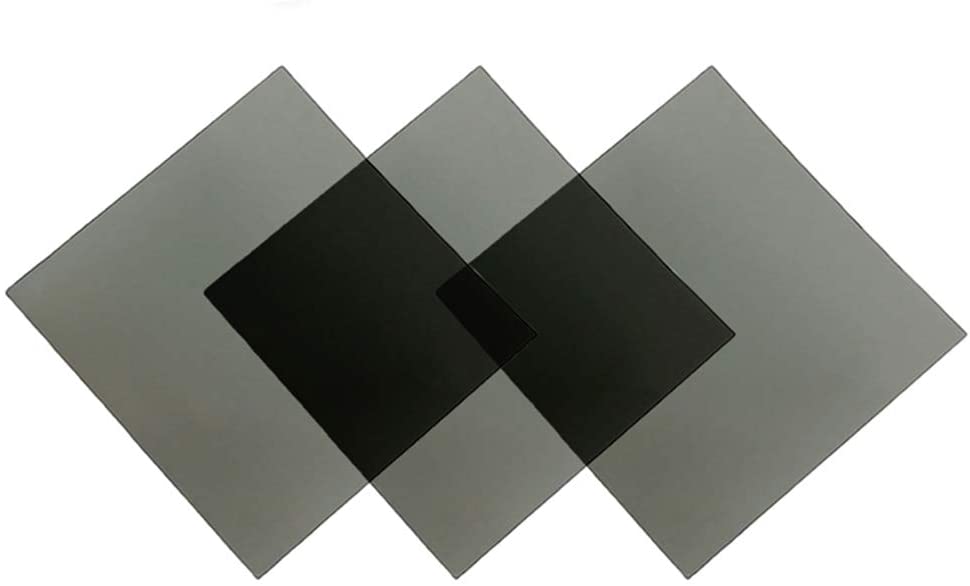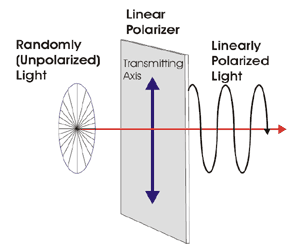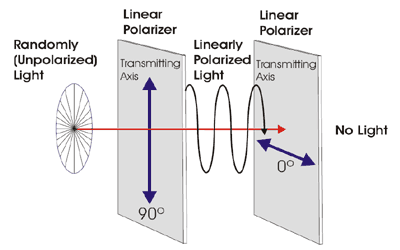
Polarising Film
In cases where glare reduction due to reflected light is required, a linear polarizer is a suitable choice. The employment of a linear polarizer is beneficial to camera filters, sunglasses, and machine vision systems.
The intensity of a light source can also be modulated using a linear polarizer. One can regulate the brightness by stacking two polarizers on top of each other and rotating one against the other. Ideal uses include aircraft cabin windows and telescope filters.
Components:
- Polarizing film
- Light source
Working Principle:
A linear polarizer transmits light in a single plane that vibrates consistently while absorbing light in the orthogonal plane. The pattern of vibration is commonly used to describe a single plane or beam of polarised light. The light is linearly polarised if the vibrations are only in one direction.

The axis are called transmitting and absorbing axis. The “polarising axis” is the term used to describe the transmitting axis. Depending on the grade of polarizer employed (transmission parameters) and the polarisation requirements, light passing through a single polarizer loses at least 50% of its transmission.
When the two linear polarizer axes are crossed at 90 degrees to one another, light is nearly completely blocked or cancelled.

This is referred to as extinction. The efficiency of a polarizer is defined as the ratio of transmission between two polarizers with axes parallel and axes crossing. Increasing the transmission doesn’t mean increasing the efficiency as the extinction might be compromised. The efficiency of a polarized filter is then measured by both the transmission and extinction factors.
Linear polarised light production methods
Linearly polarised light can be created in a variety of ways. There are three mechanisms that are well-known:
- Double refraction or birefringence
- Reflection
- Dichroism
The following is a quick summary of various methods.
Birefringent polarizers or double refraction polarizers
Natural crystals like calcite and quartz can split a single unpolarized light beam into two distinct polarised beams of equal intensity. It is feasible to create a very efficient linear polarizer by separating the two polarised beams.
Reflection polarizers
The reflected beam (S) will be partially or totally linearly polarised if a single beam of unpolarized light strikes a flat, smooth, non-metallic surface at an angle. The degree of polarisation is determined by the angle of incidence and the reflecting surface’s refraction index. The polarising or Brewster’s angle is the angle at which the degree of polarisation is 100%.
Dichroic absortive polarizers
Dichroic polarizers are used in APIs and the majority of commercially made polarizers. They have dichroism, which is the ability to absorb light that is polarised in a specific direction. A stated absorption and transmission axis can be found in a dichroic linear polarizer. The “polarising axis” is another name for the transmission axis. The most popular dichroic polarizer material is stretched polyvinyl alcohol (PVA).
Instructions:
- Place one polarizing filter in front of the light source and verify that light aligned with the axis of polarization passes through. You might not notice any difference with and without the filter but the amount of light should be reduced by 50%.
- Place a second polarizing filter in front and aligned with the first one. You’ll notice that light can still go through.
- Now rotate the second polarizing filter by 90 degrees and verify that no light goes through the filters.
- Try adding a 3rd filter in between filters one and two. Experiment placing the filter at different angles. What do you observe? Can you explain?
Links:
Polarizer | How it Works – Visible Light Linear Polarizers
How Polarizers Work | Polarizing Filters Tutorial
How polarising filters work? | Polarization of light | Floatheadphysics